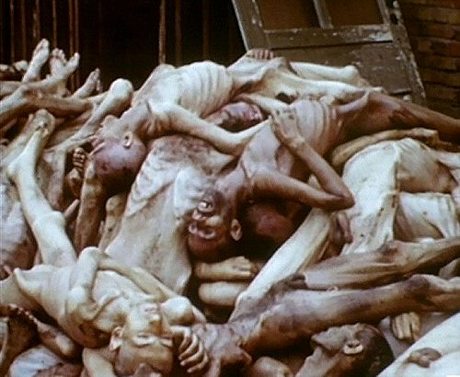Holocaust survivors remember in new Berlin exhibition
 Berlin - Young Selena crouches under the bed when the Nazi officer comes even closer to her hiding place. She can see her own face reflected in his shiny boots.
Berlin - Young Selena crouches under the bed when the Nazi officer comes even closer to her hiding place. She can see her own face reflected in his shiny boots.
"I was afraid he could hear my heart beating," Selena recalled decades later. The Nazi did not, in the end, discover the Jewish girl in the Bialystok ghetto in Poland. But the shooting in front of the house and the crying of hundreds of orphans haunted Selena B. all her life.
Selena's story is part of a new video archive in Berlin's Holocaust Memorial that goes on show Tuesday. It is called "Living with Memory" and contains 850 interviews of which about 80 can be watched by visitors on request.
The underground "place of information" houses the exhibition and complements Peter Eisenman's abstract memorial near the Brandenburg Gate. The documentation centre below the concrete blocks informs visitors about the Holocaust and through the new permanent exhibition is now enriched by witness reports.
Some 63 years after the end of the war, there are fewer and fewer people left to tell their stories. "This is what the exhibition was still missing," said Daniel Baranowski, who heads the project.
Some survivors have not talked about the terror of the Nazi era in decades. One of them is Tomasz M. "Even my own wife and children do not know the details," he said in one of the films.
Alegre T.'s story highlights the often incredibly gruesome details. Alegre and other girls in Birkenau concentration camp wanted to know where their mothers were. "Have you seen the chimney over there, the smoke?," was the reply.
Chanan L. was there when the Germans shot his friends in a mass grave. "Where was God at that moment?," he asks himself. "The world must not forget that this was no fake," says David D. who survives Auschwitz concentration camp.
The interviews in the exhibition are taken from the Fortunoff archive, a collection of holocaust recollections at Yale University in the United States.
Considerably smaller though, the Yale archive is 15 years older than Steven Spielberg's famous Shoah archive of Holocaust testimony.
The Fortunoff researchers started in 1979 to interview Jewish survivors, some of whom then in their 50s. Without any prompting, they talked about their experience in the language they preferred.
The interviews in the collection tell very different stories - memories of Jewish traditions, flight, new life and return home - and were specifically meant to include the time before and after the Nazi persecution.
The interviews, some of which last up to eight hours, have not been synchronised or subtitled, to keep the authenticity. A Dutch woman falls back from English to her mother tongue when she talks about Birkenau. That is a moving moment.
The translations are provided next to the video sections. At a computer, visitors can choose the points they want to listen to, and scroll through topics and biographies.
The new offer primarily targets school children. It is not correct to make the assumption that school children are weary of the topic of the Holocaust, project manager Baranowski said.
"In the beginning, we had doubts." But the students' interest during a test presentation was considerable. "The students listen," he said. (dpa)